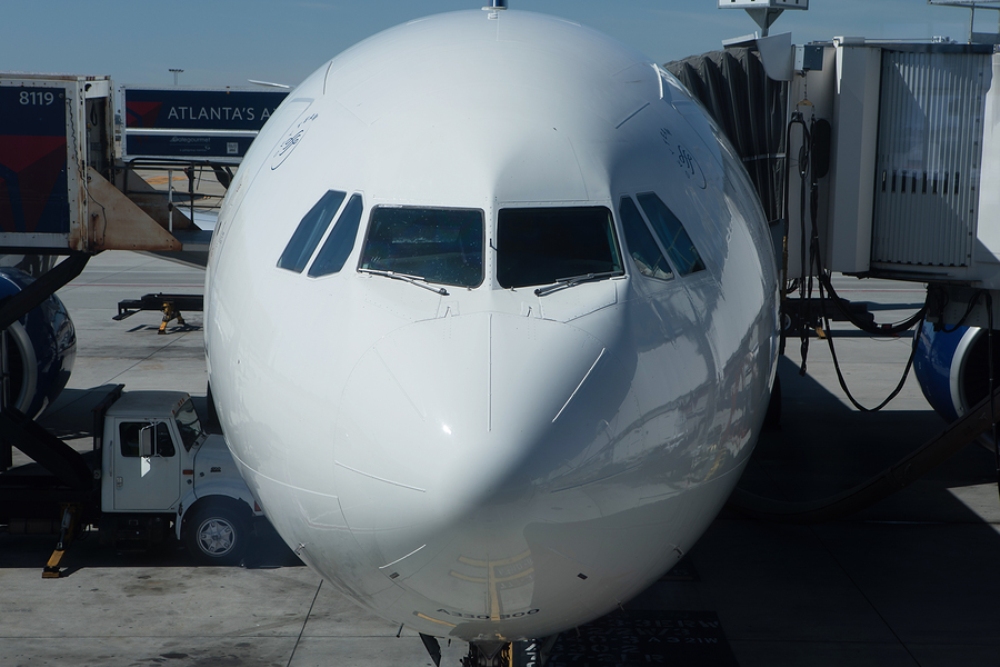
The aviation industry has come a long way since the Wright brothers made their historic flight at Kitty Hawk. In the century-plus since then, experts like Christopher Cane, a firefighter in Monroe County, FL, say technology has transformed almost every aspect of flying, from the planes to how we navigate the skies. Here's a look at how technology has changed aviation over the years.
A Brief History Of Aviation
The Wright brothers may have been the first to fly, but it wasn't until after World War I that powered flight took off. In the years between the two world wars, advances in aircraft design and engine technology made it possible for planes to fly higher and faster. And as planes became more reliable and predictable, air travel became increasingly popular with business travelers and vacationers alike.
Christopher Cane, firefighter, says during World War II, military aircraft reached new heights in speed and capability, thanks partly to turbojet engine technology advances. After the war, this technology was adapted for use in commercial airliners, ushering in a new era of air travel. Jet engines made planes faster, allowing them to carry more passengers and fly longer distances non-stop.
In the decades since advances in computers and other digital technologies have transformed almost every aspect of flying. Cockpits are now full of electronic displays and controls, while automated systems help pilots navigate and land planes safely in all kinds of weather conditions. Airports have become more efficient on the ground thanks to technologies like self-service check-in kiosks and baggage-handling
systems. And passengers can now stay connected during their flights with inflight Wi-Fi and entertainment options.
The Introduction of Aviation-Related Apps
In recent years, the aviation industry has embraced mobile technology in a big way. Companies have developed dozens of apps for everything from flight tracking to airport navigation. These apps have made it easier than ever for travelers to find their flights, re-book if necessary, and even check the weather at their destination before they leave.
Garmin (News - Alert) Pilot and ForeFlight are two of the most popular aviation apps available. Garmin Pilot is designed to help pilots plan their flights, while ForeFlight provides detailed weather information and flight simulation tools. Passengers can use several apps to book flights and find hotel deals.
Electronic Flight Bags
Another technological advancement in aviation is the Electronic Flight Bag (EFB). This portable electronic device replaces traditional paper documents, such as navigational charts and flight manuals. Pilots can use an EFB to store and access important information while flying, making it easier to find relevant data quickly and accurately.
Christopher Cane, firefighter, says in addition to making flying safer, EFBs can also reduce the amount of paper a pilot has to carry on board. This helps save space and weight, making planes more efficient and reducing fuel costs.
Diving Into The Future With Glass Cockpits
The future of aviation technology is likely to involve even more advances in cockpit design. Glass cockpits, for example, are essentially digital panels that replace traditional analog gauges and switches. Many modern aircraft now feature these glass cockpits, which provide pilots with detailed information about the plane's performance and systems in one easy-to-read display.
Glass cockpits enhance safety by providing pilots with more information than ever before and also help reduce pilot workloads. As a result, these systems are becoming increasingly popular in commercial airliners and business jets alike.
From the Wright brothers' first flight to today's cutting-edge glass cockpits, technology has come a long way in the aviation industry. Thanks to these advances, flying has become faster, safer, and more efficient than ever before—and it will only get better as technology continues to evolve.
How Can You Benefit From Aviation Technology?
Thanks to the advances in aviation technology, travelers can now enjoy faster and more efficient air travel. But it isn't only commercial airlines that are reaping the benefits of these technologies—private pilots and enthusiasts can get in on the action too.
Christopher Cane, firefighter, says several apps are available for recreational pilots, such as SkyVector and AirNav RadarBox, which provide detailed information about private airfields and flight paths. Aviation enthusiasts can also benefit from the increasing availability of drone technology and 3D printing for custom aircraft parts.
No matter what kind of flying you're doing, aviation technology can make your experience easier, safer, and more enjoyable.
Final Thoughts
Technology has been a major driving force in the development of aviation over the past century. From the first successful powered flight by the Wright brothers to today's sophisticated glass cockpits, technological advances have enabled aircraft to fly faster, farther, and more safely than ever before.
In addition to making flying safer and more efficient, modern technology is also changing how we access and interact with aviation. Pilots can use apps to plan their flights, while travelers can easily book tickets and find good deals on hotels and rental cars.
Whether you're a professional pilot or just an enthusiast, modern aviation technology is making flying easier than ever—which everyone can appreciate.
